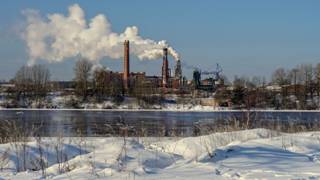Study Identifies Operating Room Toxins as Possible COPD Risk Factor
A recent study found that nurses who worked in operating rooms for 15 or more years are up to 69% more likely to develop chronic obstructive pulmonary disease (COPD) than nurses who had never worked in an operating room.
According to a study published on JAMA Network Open, long-time exposure to operating room chemicals may increase one’s risk of developing COPD. Disinfectants and surgical smoke are gaseous by-products produced by heat-generating surgical instruments, exposing physicians, nurses, and other hospital staff during electrosurgery and laser procedures in the operating room (OR).
The study is the first to assess the role of occupational exposure to surgical smoke and COPD risk.
Researchers analyzed data on OR employment history and COPD incidence among a cohort of 75,011 nurses working in US hospitals in 1984. The participants are part of the NIH-funded Nurses’ Health Study (NHS), an ongoing, prospective study of more than 121,000 US female nurses ages 30 to 55 who have completed biennial questionnaires since 1976.
OR employment duration served as a proxy for nurses’ exposure to inhaled agents. The study adjusted for primary COPD risk factors, such as cigarette smoking and chronic disease.
Compared with nurses who had no OR employment and worked in administrative or nursing education roles or a non-nurse job, the study found that inpatient and outpatient nurses had higher risks (31% and 24%, respectively) of developing COPD. Nurses with less than 15 years of OR experience had a 22% higher risk.
Although the study data reflect working conditions in the 1980s, researchers said the findings apply to today’s OR environment. Disinfectant use has increased over the past decades, and there is little evidence that the hazard of surgical smoke has reduced.
“Smoke-generating laparoscopic surgery is performed in a broader range of procedures, and protective surgical masks, such as the N95 mask, cannot block the small particulates in surgical smoke,” said study lead author Wubin Xie, postdoctoral association in the Department of Global Health at the Boston University School of Public Health, in a statement.
Additional insight from Dr. Nair: Interesting – it says results were found even after adjusting for smoking status. I can’t say I see a surprising number of OR nurses in my clinical practice.
To read the full report, visit AJMC.
Heavy Smog as Bad as Pack-a-Day Smoking For Lungs
 Living in heavily polluted areas of the United States can damage people’s lungs as much as a pack-a-day cigarette addiction, according to a new long-term study from the University of Washington in Seattle.
Living in heavily polluted areas of the United States can damage people’s lungs as much as a pack-a-day cigarette addiction, according to a new long-term study from the University of Washington in Seattle.
Study author Dr. Joel Kaufman says small changes in air pollution levels can quickly lead to lung damage, identifiable on CT scans. Specifically, ozone air pollution leads to more significant emphysema-like changes in the lungs than other forms of air pollution, the study found.
“These were not big differences in ozone air pollution that started to affect the lungs,” Kaufman said. “Although we've made tremendous progress in clean air, we can do more, and we shouldn't be reducing the focus on clean air.”
Ozone air pollution is found near the ground, caused by emissions from cars, power plants, large boilers, chemical plants, and refineries.
More than 7,000 people from areas including Baltimore; Chicago; Los Angeles; New York City; St. Paul, Minn., and Winston-Salem, N.C., took part in the study, ranging in age from 45 and 84 years old when the study began in the early 2000s. Researchers followed them for about 10 years; some were followed up with as long as 18 years after the study started.
During the study, most had multiple CT scans to see how their lungs changed over time. Almost 3,000 volunteers had repeated lung function tests. Researchers measured four pollutants, including ground-level ozone, delicate particulate matter, nitrogen oxide, and black carbon.
Annual averages of ozone pollution in the six cities during the study ranged from around 10 to 25 parts per billion. An increase in ozone air pollution of three parts per billion over 10 years was associated with an increase in emphysema-like changes roughly equivalent to smoking a pack of cigarettes a day for 29 years, researchers said. Higher ozone levels also were linked to a significant decline in lung function tests.
The study was published in August 2019 in the Journal of the American Medical Association. For more information about it and the findings, visit U.S. News and World Report.
COPD Severity Affected by Traffic-Related Air Pollution
 Regular and ongoing exposure to traffic-related air pollution can lead to a breakdown of the body’s defenses of the airway and the first line of defense against foreign invaders and the major cell type involved in acute and some forms of chronic inflammation. These pollutants restrict the body’s airflow, according to study results published in the European Respiratory Journal.
Regular and ongoing exposure to traffic-related air pollution can lead to a breakdown of the body’s defenses of the airway and the first line of defense against foreign invaders and the major cell type involved in acute and some forms of chronic inflammation. These pollutants restrict the body’s airflow, according to study results published in the European Respiratory Journal.
Acute (ongoing) exposure to traffic-related air pollution, therefore, is a significant contributor to respiratory morbidity and mortality, especially among individuals living with COPD. Researchers say they don’t know how or why this is the case.
The pollution impacts what are known as neutrophils. They are “recruited” to the lung following, specifically following diesel exhaust exposure.
Nearly a decade ago, Denmark research reported that long-term exposure to air pollution may increase the risk of severe COPD. That research was published in the American Thoracic Society's American Journal of Respiratory and Critical Care Medicine.
In the current study, researchers conducted a controlled human exposure crossover study to assess the effects of acute diesel exhaust exposure on neutrophil function in never-smokers, ex-smokers, and patients with mild to moderate COPD with support from additional in vitro studies.
The participants were exposed to diesel exhaust and filtered air for two hours on separate occasions.
Compared with filtered air, diesel exhaust exposure reduced the proportion of circulating band cells. Patients with COPD had increased peripheral neutrophil activation following diesel exhaust. The researchers also found that in vitro, suspended diesel exhaust particles increased the amount of NETs measured in isolated neutrophils.
All that to say, vehicle emissions pose a threat to individuals who have COPD.
For more information about the study and the outcomes of the research, visit Pulmonary Advisor.
Racial disparities in asthma can be explained by socioeconomic and environmental factors
 In the United States, racial disparities exist in the prevalence of asthma, morbidity and even mortality, largely explained by looking at socioeconomic and environmental factors, such as access to healthcare, a nationwide analysis shows. The findings highlight the potential of targeted interventions, such as mobile asthma clinic programs and joint programs with schools where asthma prevalence is high. Asthma is a leading cause of school absence.
In the United States, racial disparities exist in the prevalence of asthma, morbidity and even mortality, largely explained by looking at socioeconomic and environmental factors, such as access to healthcare, a nationwide analysis shows. The findings highlight the potential of targeted interventions, such as mobile asthma clinic programs and joint programs with schools where asthma prevalence is high. Asthma is a leading cause of school absence.
The analysis was published January 2019 in the Journal of Allergy and Clinical Immunology.
Per reports about the study, public health researchers said they’ve observed that African Americans have a substantially higher rate of emergency hospital visits for asthma and a higher rate of asthma-related death, compared with Caucasians.
“t isn't clear why asthma outcomes are worse in African American patients. The findings from our study suggest that poorer asthma outcomes are not genetic or biological in nature, but are instead (because of) a number of socioeconomic and environmental factors that impact asthma care,” said Anne Fitzpatrick, PhD., associate professor of pediatrics and director of the Asthma Clinical Research Program in the Department of Pediatrics at Emory University School of Medicine. “These factors can be modified and improved with the right interventions.”
Fitzpatrick’s team analyzed data from the National Heart Lung and Blood Institute's Severe Asthma Research Program, which includes academic medical centers in California, Missouri, Wisconsin, Ohio, Georgia, North Carolina, Virginia, Pennsylvania and Massachusetts. This study included 579 participants six years and older, each observed for one year.
African American patients were more than twice as likely to visit the emergency department for asthma, data showed. When the statistics were weighted – based on community and family socioeconomic factors and environmental exposure – the racial differences evened out.
What remained, though, after the statistical weighting was that African American patients were 43 percent less likely to see a doctor in an outpatient setting for asthma.
Allergenic housing conditions are another concern, Fitzpatrick says. Asthma medications won't work well if triggers of asthma, such as dust mites and mold, aren't eliminated from the home.
Types of intervention that can make a difference are mobile asthma programs, often in coordination with schools, and employer-endorsed health initiatives that incentivize wellness and preventive care.
Air Pollution, Other Environmental Factors Affect COPD, Asthma More than Genetics, Study Says
A new study published in Nature Communications, has revealed that air pollution and additional environmental factors may influence respiratory disease-related genes, including chronic obstructive pulmonary disease (COPD) and asthma, more so than genetic ancestry.
 The study entitled, “Gene-by-environment interactions in urban populations modulate risk phenotypes,” focused on examining data gathered on more than 1,000 individuals from Montreal, Quebec City and Saguenay, as well as analyzing environmental datasets, biological samples and health questionnaires.
The study entitled, “Gene-by-environment interactions in urban populations modulate risk phenotypes,” focused on examining data gathered on more than 1,000 individuals from Montreal, Quebec City and Saguenay, as well as analyzing environmental datasets, biological samples and health questionnaires.
As was one of the largest studies of its kind, researchers investigated the connection of environmental factors and gene expression. The study evaluated each patient’s “genetic, health, and disease information” which was then linked to environmental data that may have impacted gene expression, such as “air pollution, the area’s walkability, and access to food.” In turn, the study provided significant insight into the genetic characterization of the individuals.
“We were surprised to find that we were able to stratify genetic ancestry within Quebec, identifying individuals whose descendants were from Montreal versus Saguenay, for example,” said Philip Awadalla, PhD, the study’s senior author. “This helped us to show how most gene expression is not derived by ancestry, and that environmental exposures associated with living in a particular city or region are more impactful on gene expression associated with disease traits than heritable variation.”
Throughout the study, researchers discovered that high levels of exposure to “particulate matter and nitrous dioxide” were documented to have had impacted individual’s “gene expression associated with respiratory function and oxygen pathways.” This, in turn, resulted in an increased rate of respiratory diseases, including COPD. The study also revealed that “certain genetic variants determine how one’s gene expression responds to environmental stimuli.”
“Our findings demonstrate how the local environment directly affects disease risk phenotypes and that genetic variation, including less common variants, can modulate individual’s response to environmental challenges,” said the researchers.
“Today, with quantities of data never before available, we are able to make important discoveries that will help us fight and overcome disease,” said Reza Moridi, Ontario’s Minister of Research, Innovation and Science.




